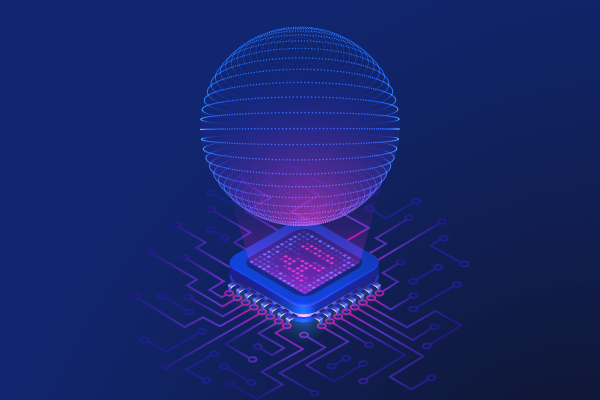Share Via
Enterprise networks today are struggling to match the speed of the cloud and deliver the agile operational model that modern IT teams demand.
Legacy approaches focused on layers of hardware models, product SKUs, creative software licensing schemes and unexpectedly expensive support contracts no longer work in an era of user mobility, process digitization with IoT, app migration to the cloud and, of course, AI.
Nile Access Service has been designed to prevent the traditional burdens that hold enterprise networks back. By integrating key principles like as-a-service consumption, standardized system design, and closed loop automation with AI, it aims to eliminate any existing time, budget, and knowledge gaps for IT teams.
In doing so, Nile Access Service helps define the principles for next-gen enterprise networks. For the first time in the industry, it offers service level guarantees for network coverage, capacity and availability.

At the heart of this innovation lies cloud-native software delivery and AI powered predictive maintenance of network infrastructures. Let’s double click.
What does it take to enable guaranteed performance?
In the realm of enterprise networking, achieving optimal performance hinges on meticulous hardware design and advanced software integration. Enterprise grade Nile access point and switching hardware make up the Nile Service Blocks, as the foundational element part of the Nile Access Service.

For instance, Nile access points (APs) are equipped with 4×4:4 radios, ensuring enhanced reliability and support for high density of users. A dedicated radio for scanning allows the other three radios to serve clients uninterrupted, significantly boosting overall performance. A 5Gbps uplink between the APs and switches prevents congestion and packet drops during traffic bursts. Our antenna placement strategy for our Wi-Fi access points, refined through years of experience, minimizes interference by isolating the mainboard from the antennas and optimizing antenna patterns and spacing.
Deterministic system design at the heart of the Nile Service Blocks is driven by the principle of operations-driven development. Every feature, protocol, or hardware component is designed to be self-monitoring and self-managing, reducing the need for human intervention. We have streamlined our code to eliminate unnecessary elements, focusing solely on connecting and forwarding packets. By removing redundant protocols and automating traditional manual & complex operations within the Nile Services Cloud, we have minimized system interference and manual configurations, ensuring optimal performance. Nile hardware elements utilize a single model and release, with automated fine-tuning to adapt to individual environments.
Network planning and deployment are standardized to ensure consistency and reliability across all customer environments. Our high-definition site surveys and automated network design processes eliminate human errors and ensure uniformity. During deployment, a digital twin of the physical network is created within the Nile Services Cloud, allowing for real-time error detection and correction. This approach ensures that any installation errors are promptly addressed, maintaining the integrity of the network design. You can catch a demonstration of this unique capability here.
Data collection from the Nile Service Blocks and real-time analysis within the Nile Services Cloud are integral part of our approach to enable a comprehensive 360-degree view of network coverage, capacity and availability metrics across all Nile deployments. To make sure we adhere to the service level guarantees offered as part of the Nile Access Service, we gather thousands of data points from each network element every minute, monitoring CPU, memory, processes, and more. Environmental factors such as power and voltage fluctuations, RF interference, temperature, and cable health are also continuously monitored. Contextual data from users, devices, infrastructure, and applications are collected using sensors, offering a holistic view of network health and performance.

Closed-loop automation with AI is at the heart of our network management strategy. Real-time data processing and analytics continuously fine-tune the network based on thousands of data points. Our engineers have crafted numerous automation workflows to enhance network performance. Nile’s AI/ML capabilities ensure that every action taken by our automation improves user performance, reverting any actions that do not and creating tickets for quick resolution by engineers. Our cloud delivery model for systems software ensures continuous improvement, with regular updates and rollouts that do not disrupt customer networks. This approach guarantees that our network software remains cutting-edge, with no backward compatibility issues affecting performance. You can catch one of the demonstrations of this brand new approach here.
What’s in it for the IT teams and IT leaders?
In an era dominated by digital advancements, many enterprises find themselves in a conundrum. While they strive to embrace digital transformation, their office networks — the backbone of their digital workplace — often remain tethered to outdated practices and legacy systems. This status quo isn’t just inefficient and costly; it’s a roadblock to innovation.
The challenges are multifaceted: Aging infrastructure prone to outages, budget limitations hindering upgrades, and overburdened IT teams grappling with a patchwork of solutions. This complexity lacks the agility and resilience needed for today’s fast-paced business environments.

Nile tackles these legacy challenges head-on by converging fragmented products into a single unified service that integrates performance guarantees. This infographic outlines the top 10 benefits of Nile’s transformative approach to enterprise networking, including:
- Converging 10+ legacy products into one streamlined service
- Automating manual workflows that previously required custom scripting
- Moving from reactive break-fix to predictive intelligence
- Enabling security principles across the network fabric
- Offering flexible consumption models aligned to business needs
For a deeper dive, our recent global broadcast provides a great overview of key customer outcomes as they adopt Nile’s next-gen networking principles.
Charting A New Course: Recommendations for the Future
The bottom line is that enterprise networking is undergoing a renaissance. Forward-thinking companies are rejecting legacy fragility and complexity. They are embracing solutions such as the Nile Access Service to match the speed of the cloud for their enterprise networks.

The future of enterprise business depends on digital innovation in the cloud, powered by brand new generative AI workflows. The last thing any enterprise IT leader needs is for her enterprise network infrastructure distracting them from realizing the benefits of this movement. Here are our recommendations for the path forward:
- Embrace Cloud-Native Architectures: The future is in the cloud. Adopting cloud-native architectures enables enterprises to be more agile, scalable, and resilient.
- Invest in Security from the Ground Up: Integrating zero-trust security principles and automating access policies from the onset is crucial for modern cybersecurity.
- Think Holistic, Not Patchwork: Enterprises should adopt a holistic view of their network infrastructure, integrating systems and leveraging automation for smoother operations.
Looking forward to continuing the conversation at nilesecure.com/journey.



